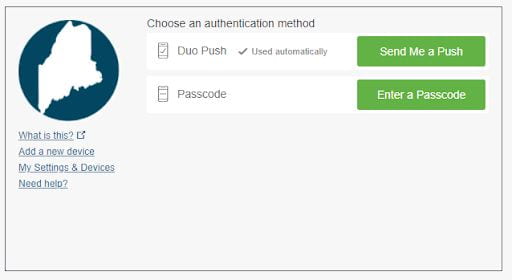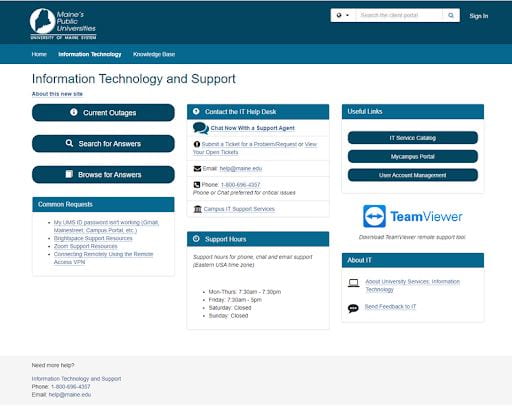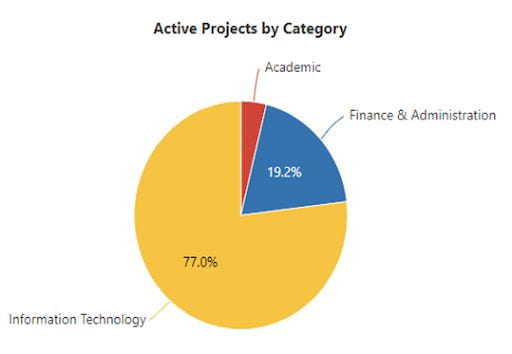
MULTI-FACTOR AUTHENTICATION | TEAMDYNAMIX KNOWLEDGE MANAGEMENT, ASSET MANAGEMENT, AND SERVICE CATALOG | SUMMARY OF 2021 PROJECTS |
MULTI-FACTOR AUTHENTICATION
Starting in late 2021, and continuing through 2022, US:IT will be implementing multi-factor authentication (MFA) to better protect the intellectual property and personal information of faculty, staff, and the digital assets of our campus. MFA offers additional protection to your digital identity and is commonly used in many businesses. One common example would be when you log in to a site and are then required to enter a code sent via text message, phone call or email.
The multi-factor authentication project teams will be implementing the MFA product by Duo Security. Several teams are working through the technical, support process, and other decisions required to successfully deploy MFA within the University of Maine System.
The first phase of the project is focused on adding MFA to the UMS Single Sign-On system and enrolling the majority of faculty and staff members, beginning with targeted pilot groups. Other applications and remaining members of the UMS communities will be covered in separate projects or phases.
Multi-factor authentication will add a step to the UMS SSO login process. The first steps for logging in will remain the same: you will enter your UMS ID and password. The additional step utilizes a smartphone or hardware token (also called a fob) to verify your identity. Requiring two different channels of authentication helps prevent unauthorized logins to your account, even if your password has been compromised.

Example of Duo MFP Prompt during UMS Single Sign-On Process
TEAMDYNAMIX KNOWLEDGE MANAGEMENT, ASSET MANAGEMENT, AND SERVICE CATALOG
Over the past several years, the US:IT organization has focused significant time and resources on improving service to the entire UMS Community. To some extent US:IT’s progress in developing, delivering, and supporting high-quality impactful IT services has been limited by the lack of modern and integrated IT Service Management (ITSM) tools.
IT Service Management is an industry-standard set of practices, guidelines, and disciplines that have evolved over several decades to help IT organizations design, build, deliver, and operate services that end-users need to support their work, and serve the strategic goals of the organization
Through a competitive proposal process, US:IT selected TeamDynamix as our new IT Service Management platform and implementation partner. As has happened in many areas, the emergence of COVID-19 derailed our implementation planning and timeline. Working closely with TeamDynamix, we have begun an incremental implementation focusing not only on the new application but also on modernizing our processes and practices.
Work in Progress
 Client Portal
Client Portal
A new IT portal launched this fall at itsupport.maine.edu. The client portal is the foundation for improved customer experience through IT Service Management. Currently, the portal provides contact information for our help desk and access to the new Knowledge Base. Additional self-help tools and resources will be added to the portal as each segment comes online.
Knowledge Management
Using a standard methodology called Knowledge-Centered Service, US:IT launched the new internal and public Knowledge Base this fall along with all new processes for creating, updating, and retiring knowledge articles.
The new Knowledge Base will be continuously updated and is a great resource for students, faculty, and staff to solve their own issues and learn how to use technologies provided and supported by US:IT. The new knowledge base will also allow our IT support agents to share information more effectively and solve customers’ issues more quickly and consistently no matter where the customer is based.
Service Catalog
US:IT is in the beginning stages of moving to the new Service Catalog. Once completed, this will be fully integrated into the client portal along with the knowledge base such that a single search will show services that are available and provide helpful resources about those services.
Each service page will provide information about how users can access the service and will present quick links to service-specific requests, help, and more information. The implementation project team is carefully designing the user experience and testing with end-users to maximize the usefulness of this tool for our community.
A late spring 2022 launch is anticipated for the new service catalog.
Asset Management
Historically, information about assets purchased by the university has been maintained in pockets by campuses or, in some cases, by departments. A single, comprehensive asset management system and consistent processes and definitions will provide several benefits such as:
- Better ability to forecast and plan for device replacement needs and costs
- Better understanding of repair, maintenance, and support trends will lead to improved customer satisfaction and service efficiency
- Maintain a history of each device including repairs, locations, and assigned users
The first phase of centralized IT asset management went live in November 2021 with an initial import of desktops, laptops, and mobile devices. The team will continue to refine this information and add other types of IT assets such as classroom technology, software licenses, networking infrastructure, and server infrastructure over the next several months.
As assets are correlated with users in the system, they will be displayed in the client portal so individuals can see what hardware and software they are assigned. Help Desk agents will also be able to see the service history of a device when talking or chatting with a customer leading to faster issue resolution.
For additional information on TeamDynamix future initiatives, please see Implementation of TeamDynamix Remaining Modules.
SUMMARY OF 2021 PROJECTS
 The Project Management Office (PMO) is currently partnering with other US:IT units and University departments on 26 active projects in the categories of Academic, Finance & Administration, and Information Technology.
The Project Management Office (PMO) is currently partnering with other US:IT units and University departments on 26 active projects in the categories of Academic, Finance & Administration, and Information Technology.
In addition to Multi-Authentication and TeamDynamix Knowledge Management, Asset Management, and Service Catalog, other system-wide initiatives include:
- Automated Gym Waiver for Employees – the goal of this project is to develop a unified UMS employee gym waiver and deploy a solution for electronic completion of the waiver in MaineStreet
- Dell Connected Configuration Service Implementation – IT has engaged in a process to shift from a device procurement model to a services relationship with our strategic partner, Dell. Devices procured from Dell would be imaged in the factory with the UMS standard software set and be joined to US:IT management systems. Additionally, the process for staging, data migration, and deployment to the customer would be streamlined to reduce time to delivery.
- Distance Learning and Telemedicine Grant – In order to support the business need and sustain increased demand for distance learning and telehealth over time, the University of Maine System received funding from the USDA Distance Learning and Telemedicine program in the amount of $1,000,000 to invest in technology infrastructure that will ensure rural communities are not left behind at this critical time. This initiative includes all 7 campuses as well as the University of Maine School of Law, the University of Maine Graduate and Professional Center, Northern Light Health, Penobscot Community Health, and Phoenix Health Care.
- Grants Management Solution (Kuali) – This project will implement Kuali’s SaaS solution that will provide enterprise-level grants management to support multiple campuses. The new system is designed to simplify and streamline application submission, award processing, and grant administration for the university and provide a central web-based repository of proposal, award and other information.
- MaineStreet UX Enhancements (HighPoint Schedule Builder) – This project will implement HighPoint’s Schedule Builder module, which will be accessed by students via the Student Center. Schedule Builder will provide students with an easy-to-use interface that offers a variety of filters and options with real-time information to aid them in creating a course schedule that fits their needs.
- Perceptive Document Retention Implementation – This project will implement the Retention Policy Manager add-on for Perceptive Content, which allows for the creation of rules around document destruction, including approval workflows and automated timed processes. This is a topic closely tied to security and risk, as the tool assists in facilitating the document retention/destruction policies as defined in the UMS Record Retention APL (http://staticweb.maine.edu/wp-content/uploads/2014/04/IV-D-Record-Retention-Practices.pdf?0fa197).
- Repaving MaineStreet – The Repaving MaineStreet initiative will comprise three primary projects: Implementations of HR and Finance cloud platforms and a re-implementation of PeopleSoft Campus Solutions. The overarching goal is to implement the opportunities for improvement identified during the ERP Assessment that will optimize processes and technology to support the University of Maine System’s strategic objectives, particularly the requirements driven by Unified Accreditation.
